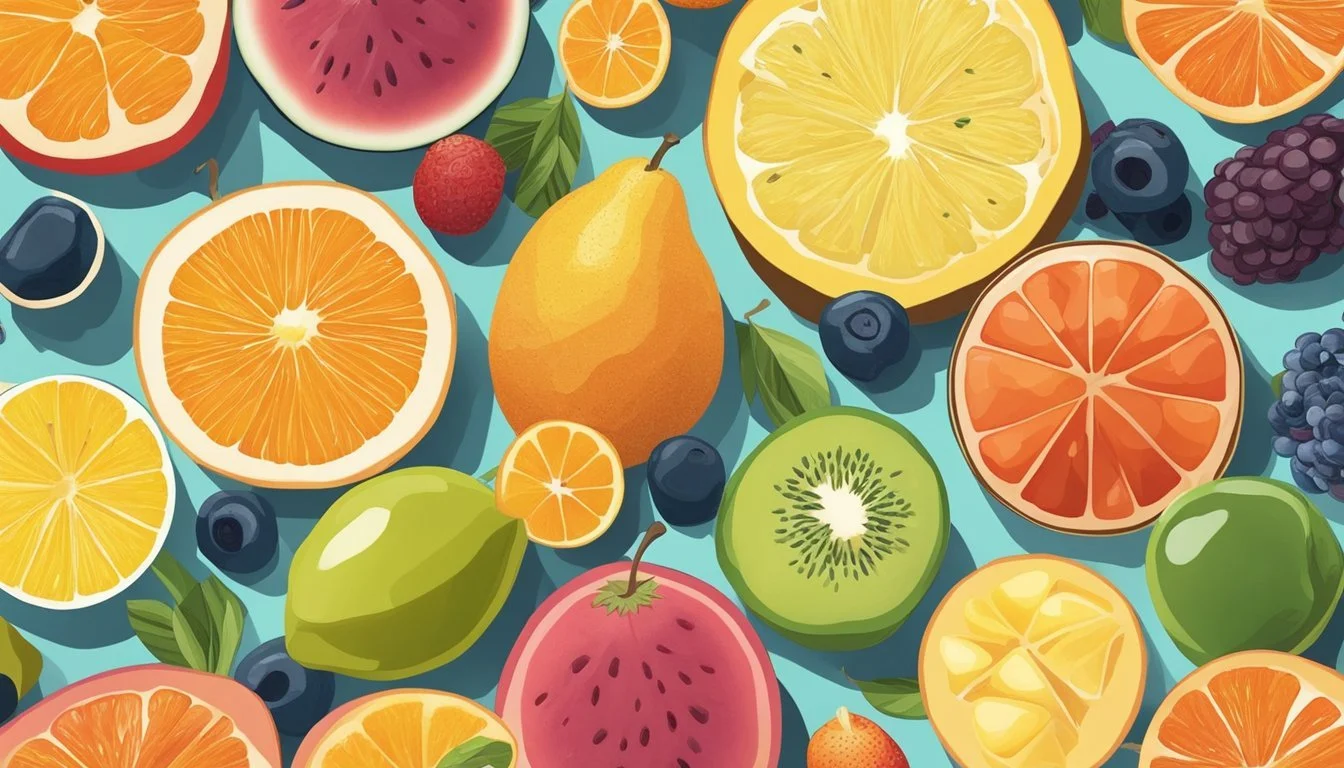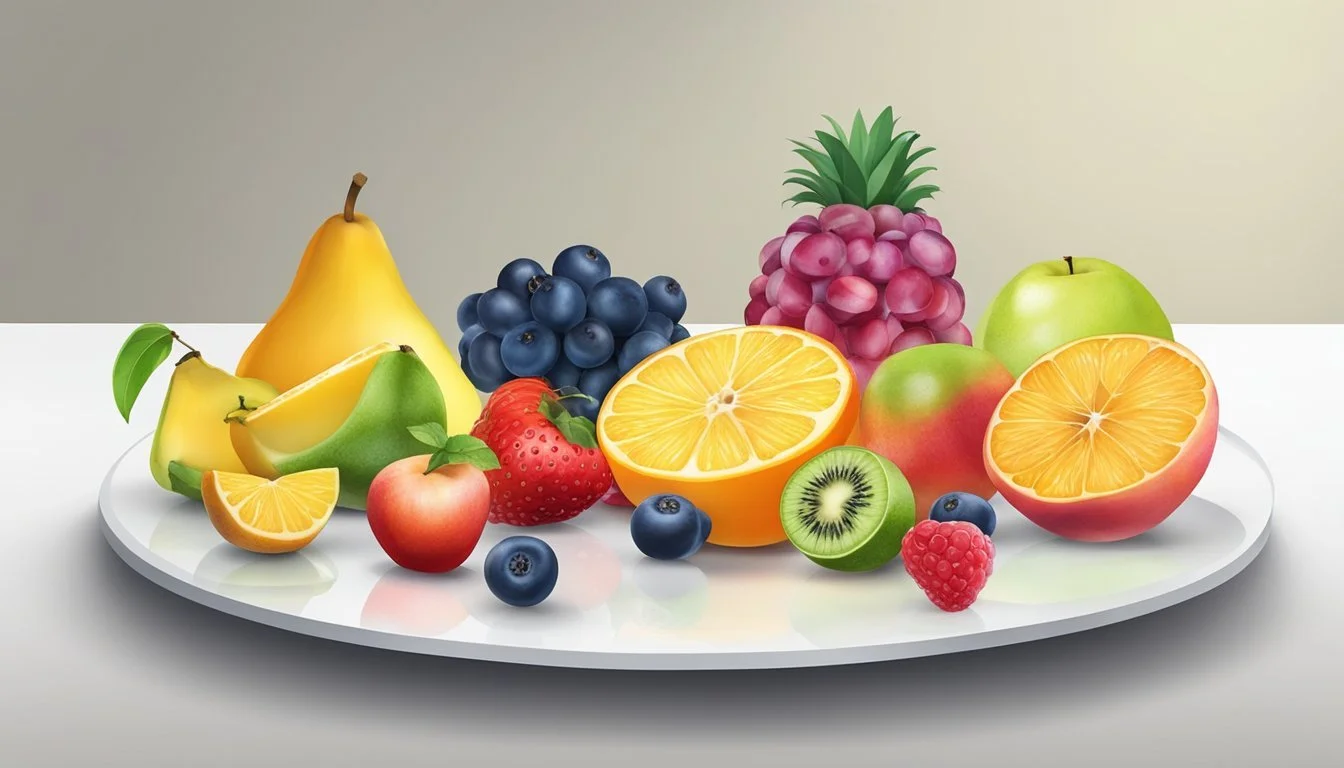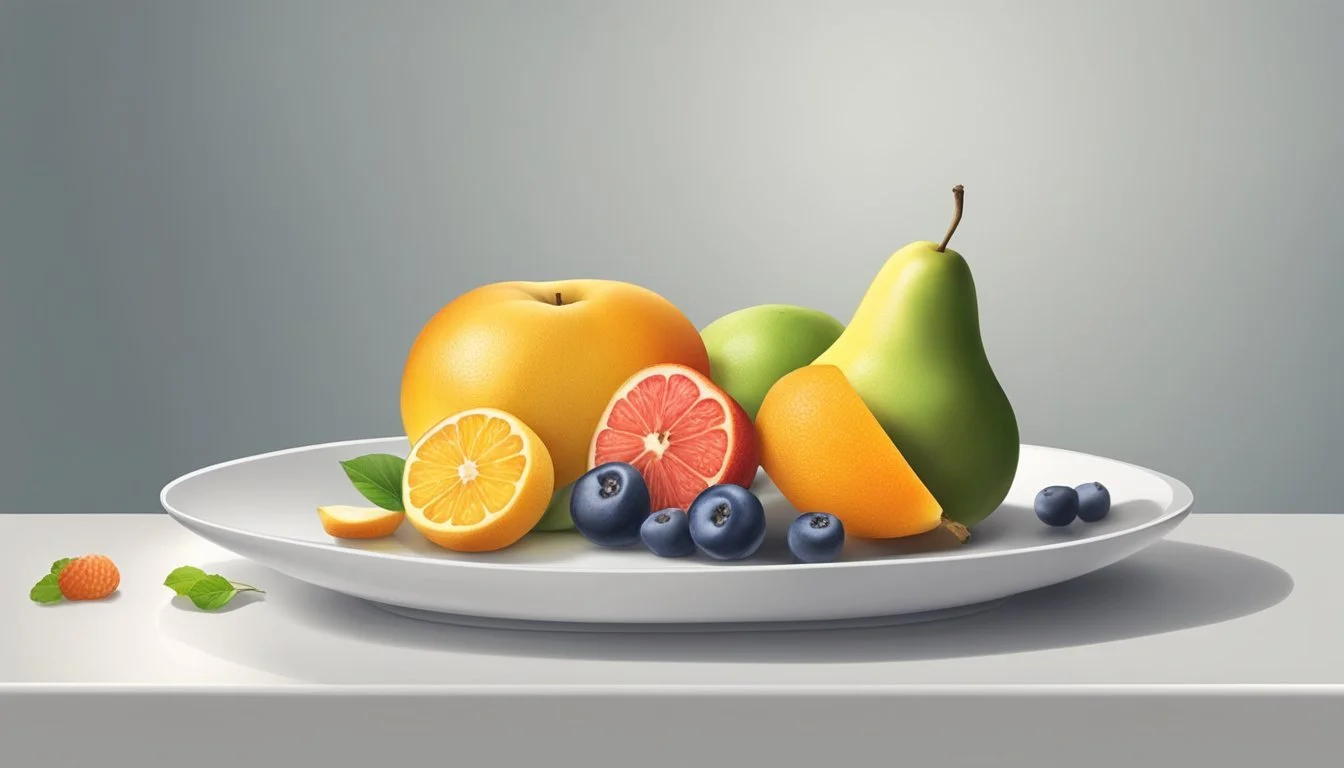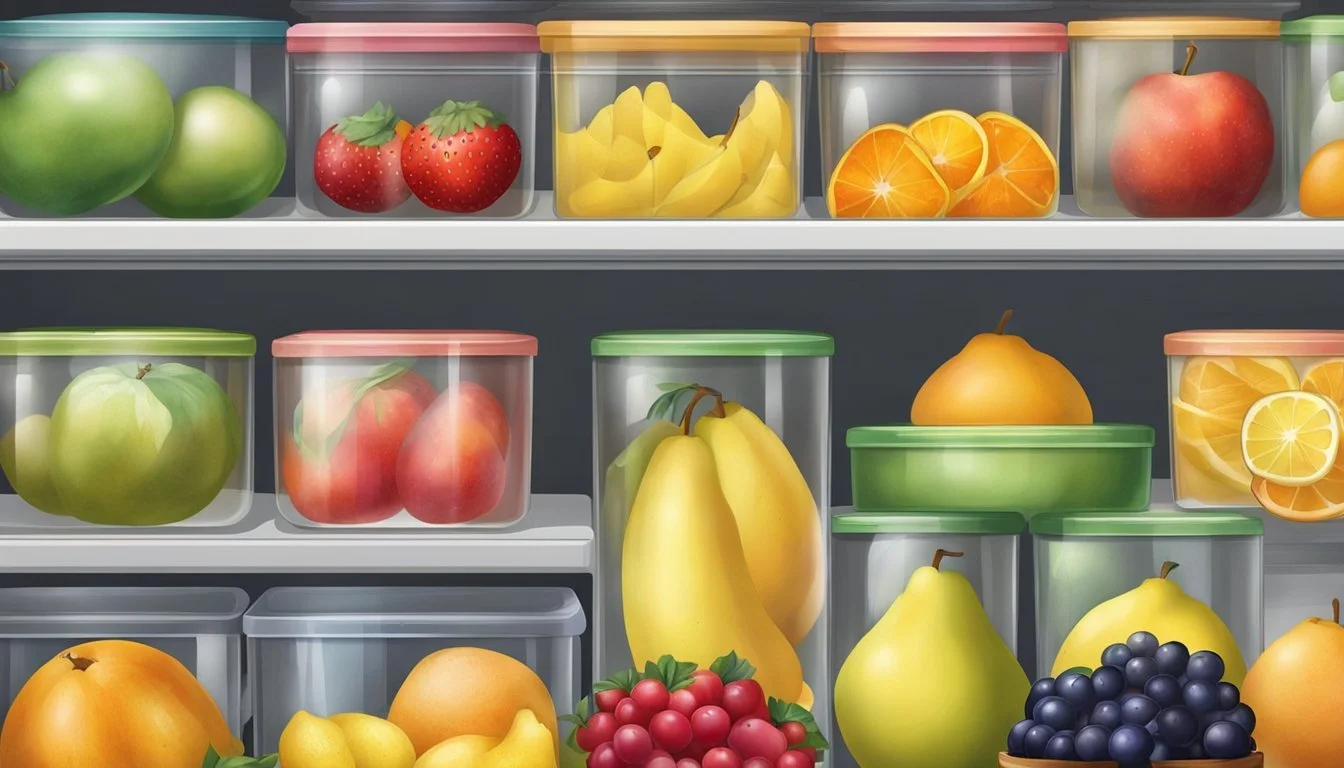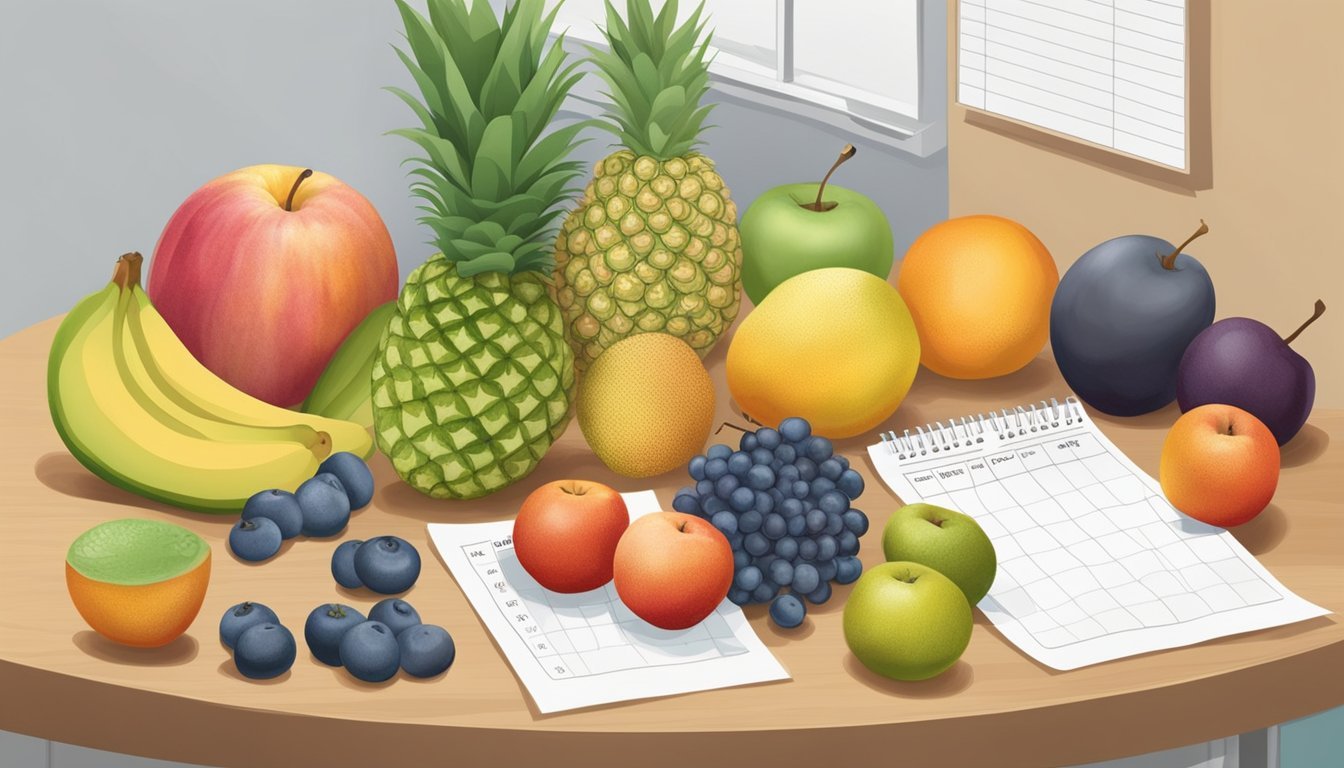How Long Do Cut Fruits Last?
Shelf Life and Storage Tips
Storing cut fruits (What wine goes well with fruits?) properly is crucial for maintaining freshness and ensuring food safety. After slicing fruits, it's essential to refrigerate them in covered containers or freeze them in plastic freezer bags or containers. In general, cut fruits can last in the refrigerator for about 3 to 5 days. This limited shelf life is because once the protective skin of the fruit is breached, oxidation begins, which can lead to spoilage and nutrient loss. It is recommended to avoid leaving cut fruits at room temperature for more than two hours to prevent bacterial growth.
Different fruits have varying lifespans once cut. For instance, citrus fruits and melons can keep longer compared to apples and bananas (how long do bananas last?), which tend to brown quickly when exposed to air. A mixture of lemon juice and water can help prevent browning and extend the life of these fruits. However, even with these precautions, all cut fruits will eventually spoil. It is important to look for signs of spoilage such as off odors, a slimy texture, and discoloration before consumption.
Freezing can significantly extend the life of cut fruits. When stored properly in airtight containers or heavy-duty freezer bags, cut fruits can maintain good quality for about 10 to 12 months in the freezer, though they are safe to eat beyond that period. The textural quality of thawed fruits may differ from fresh, which often relegates them to use in smoothies, cooked dishes, or baking rather than fresh consumption.
Fundamentals of Fruit Longevity
Fruit longevity is influenced by how they are stored after being cut, as well as the temperature they are kept at. The shelf life of cut fruit varies, but understanding the fundamentals is key to maximizing freshness.
Understanding Fresh Produce Shelf Life
Once fruits are sliced, multiple factors affect their shelf life. Enzymatic browning and microbial decay are the main culprits that lead to spoilage. Browning occurs when fruits are exposed to air, triggering oxidation. To combat this, one can store cut fruits in airtight containers to slow down the oxidation process. Citrus juice, like lemon, is often applied to the surface of cut fruit to prevent discoloration and extend shelf life.
Peaches: 4-5 days when whole, 2-3 days when cut
Apricots: 7-10 days
Nectarines and Plums: Similar to peaches
Importance of Temperature Management
The temperature at which cut fruits are stored strongly affects their longevity. Fruits should be kept in the refrigerator to maintain freshness and slow down the growth of harmful bacteria. The recommended storage temperature is usually between 32°F (0°C) and 40°F (4°C). However, not all fruits require refrigeration:
Peppers: Best at room temperature, refrigerate only if using soon after removal
Root Vegetables: Carrots, beets, and radishes in the refrigerator; potatoes and squashes in a cool, dark place
Leaving cut fruit at room temperature for more than two hours, especially when the temperature is above 90°F (32°C), increases the risk of foodborne illness.
Specific Storage Guidelines
Proper storage is crucial to extending the shelf life of cut fruits and vegetables. Each type of produce has optimal conditions for maintaining freshness after cutting.
Storing Citrus Fruits
Citrus fruits such as oranges and grapefruits should be tightly wrapped or sealed in airtight containers and refrigerated. They typically last up to 3-4 days when stored at 35 to 40 degrees Fahrenheit.
Keeping Berries Fresh
Berries, including strawberries and blueberries, are best stored in a shallow container covered with a paper towel and refrigerated. Avoid washing them until just before use to prevent mold.
Preserving Stone Fruits
Cut stone fruits like peaches and plums benefit from refrigeration in airtight containers. To maximize their life, store them at temperatures just above freezing and consume within 3-5 days.
Maintaining Melons Quality
Melons such as cantaloupe (how long does cantaloupe last?) and watermelon should be covered with plastic wrap or stored in an airtight container in the refrigerator. They generally last 3-4 days when kept chilled.
Handling Root Vegetables
Root vegetables including carrots and beetroots can last up to a week if they are stored in a container with a lid and lined with paper towels to absorb excess moisture.
Extending the Life of Leafy Greens
Leafy greens like lettuce should be wrapped in a damp paper towel and placed in a storage container. They need to be consumed relatively quickly, typically within 2-3 days to ensure crispness.
Refrigeration Techniques
Proper refrigeration is crucial for extending the shelf life of cut fruits. To maintain freshness and prevent spoilage, understanding how to use the refrigerator effectively and knowing which fruits to refrigerate is essential.
Using the Refrigerator Effectively
When storing cut fruits in the refrigerator, one should use airtight containers or wrap them tightly with plastic wrap to limit exposure to air. Setting the refrigerator temperature between 35 to 40 degrees Fahrenheit (2 to 4 degrees Celsius) is key, as it slows down the oxidation process. Containers should be checked regularly for condensation, which can be a sign of excess moisture that could accelerate spoilage.
Temperature: Set fridge to 35-40°F (2-4°C)
Containers: Use airtight containers or plastic wrap
Moisture: Check for condensation and dry if necessary
Refrigerate or Counter? Deciding Where to Store
Most cut fruits should be kept refrigerated to preserve their freshness. However, certain fruits like tomatoes and avocados might maintain their texture and flavor better if stored on the counter until they ripen. Once ripe and cut, they should be refrigerated. Conversely, items like root vegetables and hardy squashes may benefit from a cool, dark place like a pantry for a more extended storage life prior to being cut.
Refrigerate: Apples, berries, grapes, and cut tropical fruits
Counter, then refrigerate: Tomatoes, avocados (once ripe)
Cool, dark place: Potatoes, winter squashes (prior to cutting)
Safety and Spoilage Prevention
When it comes to cut fruits, safety and prevention of spoilage are paramount. Correct storage and regular checks for spoilage signs can significantly extend the shelf life of fruits, ensuring they remain safe to consume.
Identifying Signs of Spoilage
One must be vigilant for indicators of spoilage such as mold and slime. These are clear visual signs that the fruit has begun to go bad. Fruits that emit an off or fermented odor should also be deemed unsafe. Furthermore, if the texture of the fruit has changed, exhibiting excessive softness or mushiness — it may be best to discard it.
Visual: Look for mold growth, discoloration, or slime.
Smell: Sniff for sour or fermented odors.
Touch: Feel for soft spots or mushiness indicating rot.
Practices to Reduce Food Waste
Proper storage practices are crucial for extending the life of cut fruits and thus reducing food waste. Cut fruits should be refrigerated at 40°F or below in clean containers to slow down the decay process. They should be consumed within 3-4 days to ensure safety. Additionally, separating fruits that emit ethylene gas—like apples and bananas—from other cut fruits can prevent premature ripening and spoilage.
Refrigerate Promptly: Store at 40°F or colder.
Separate Ethylene-Producing Fruits: Keep apples and bananas away from other cut fruits.
Check Regularly: Inspect for spoilage signs and consume within recommended timeframes.
Practical Tips for Fruit Storage
Ensuring the longevity and freshness of cut fruits involves a few key strategies. It's essential to use airtight containers, manage ethylene exposure from fruits, and employ proper washing and drying methods.
Utilizing Airtight Containers
To prolong the shelf life of cut fruits, one should store them in airtight containers. This reduces oxidation and moisture loss, which are both catalysts for spoilage. Refrigeration in these containers is recommended, ideally at a temperature range of 35 to 40 degrees Fahrenheit.
Managing Ethylene Exposure
Certain fruits produce ethylene, a natural gas that can accelerate ripening and, eventually, rotting in surrounding produce. It is important to store ethylene-producing fruits like apples and bananas separately from ethylene-sensitive ones, such as berries and melons, to prevent premature spoilage.
Proper Washing and Drying Methods
Before storing, fruits should be properly washed to remove dirt and bacteria. The recommended method is a rinse in a mixture of water and food-safe cleaning agents like vinegar in a ratio of 1:4, followed by a thorough rinse with water. After washing, one should dry the fruit completely with clean hands and paper towels. This helps to prevent mold growth and extends the fruit’s freshness.
Planning and Purchasing Strategies
When selecting and buying produce, one's strategies greatly influence the longevity of cut fruits. Thoughtful planning and mindful purchasing are pivotal to optimize freshness.
Buying According to Need and Ripeness
Consumers should buy produce according to their immediate needs and the ripeness of the fruits. It is advisable to purchase fruits that are at varying stages of ripeness—some ready to eat immediately, others that will ripen over the course of several days. This approach helps to ensure a continuous supply of fresh produce. For instance:
Bananas: Buy some that are bright yellow for immediate consumption and others that are greener to ripen at home.
Avocados: Choose firm ones that will ripen in a few days if not needed right away.
Assessing Produce Before Buying
Inspecting produce before purchasing is essential to ensure quality. Look for:
Absence of blemishes: Smooth, unbroken skin without discolorations or soft spots.
Firmness: Indicates freshness, particularly in apples and citrus fruits.
Color: Vibrant, consistent coloration suggests ripeness and readiness to eat.
Considering the intended use of the produce is also crucial. For example, slightly overripe bananas may be suitable for baking, while crisp apples are more suitable for fresh consumption.
Health and Nutrition Considerations
When fruits are cut, they're exposed to elements that can affect their nutritional value and shelf life. Understanding how storage conditions impact nutrient retention and balancing freshness with cooking needs is crucial for health benefits.
Impact of Storage on Nutrient Retention
Once produce is cut, nutrients start to degrade. Vitamin C is particularly vulnerable to loss when fruits are exposed to air (oxygen), light, and heat. This degradation is a time-sensitive process, with notable losses within hours of exposure. To mitigate this, cut fruits should be stored to minimize their exposure to these elements:
Air: Store in airtight containers
Light: Use opaque containers or store in dark places
Heat: Refrigerate promptly
Storage Temperature Recommended Storage Method Cold (Refrigeration) Airtight containers, away from light Room Temperature Only applicable for brief periods, generally less than two hours
Balancing Freshness and Cooking Needs
The freshest produce offers the best nutritional value and flavor, but practicality often requires precooking or pre-cutting for later use. One should consider:
Freshness: Food should be consumed as close to the cutting time as possible.
Cooking: If produce is intended for cooking, it's best to cut just before use to retain maximum nutrients.
When fruits are cut ahead of time for convenience, it's important to:
Cook them within a brief period to minimize nutrient loss.
Use methods like steaming or microwaving to reduce the nutrient depletion compared to boiling.
Conclusion
Proper storage is crucial for extending the shelf life of cut fruits. Refrigeration at temperatures between 35 to 40 degrees Fahrenheit (2 to 4 degrees Celsius) is essential to slow oxidation and maintain freshness. Typically, cut fruits can be safely consumed within 3 to 5 days when kept in the fridge in covered containers.
For longer preservation, freezing is an option. Cut fruits, stored in airtight containers or heavy-duty freezer bags, will retain optimal quality for about 10 to 12 months. Despite this, they remain safe to eat beyond that timeframe if kept frozen continuously.
It is advisable to minimize nutrient loss by reducing exposure to heat, oxygen, and light. Certain nutrients, like vitamin C, are particularly susceptible to degradation after cutting.
Lastly, one should never leave cut fruits at room temperature for more than two hours to prevent the growth of harmful bacteria.
Storage Method Duration in Fridge Duration in Freezer Refrigerated covered container 3 to 5 days Not recommended Freezer-friendly airtight container Not applicable Up to 12 months
Adhering to the guidelines above will help ensure cut fruits remain safe and enjoyable to consume.

